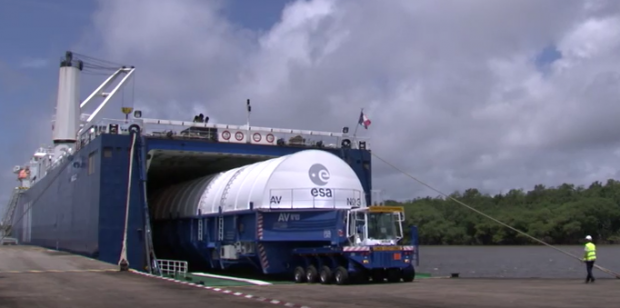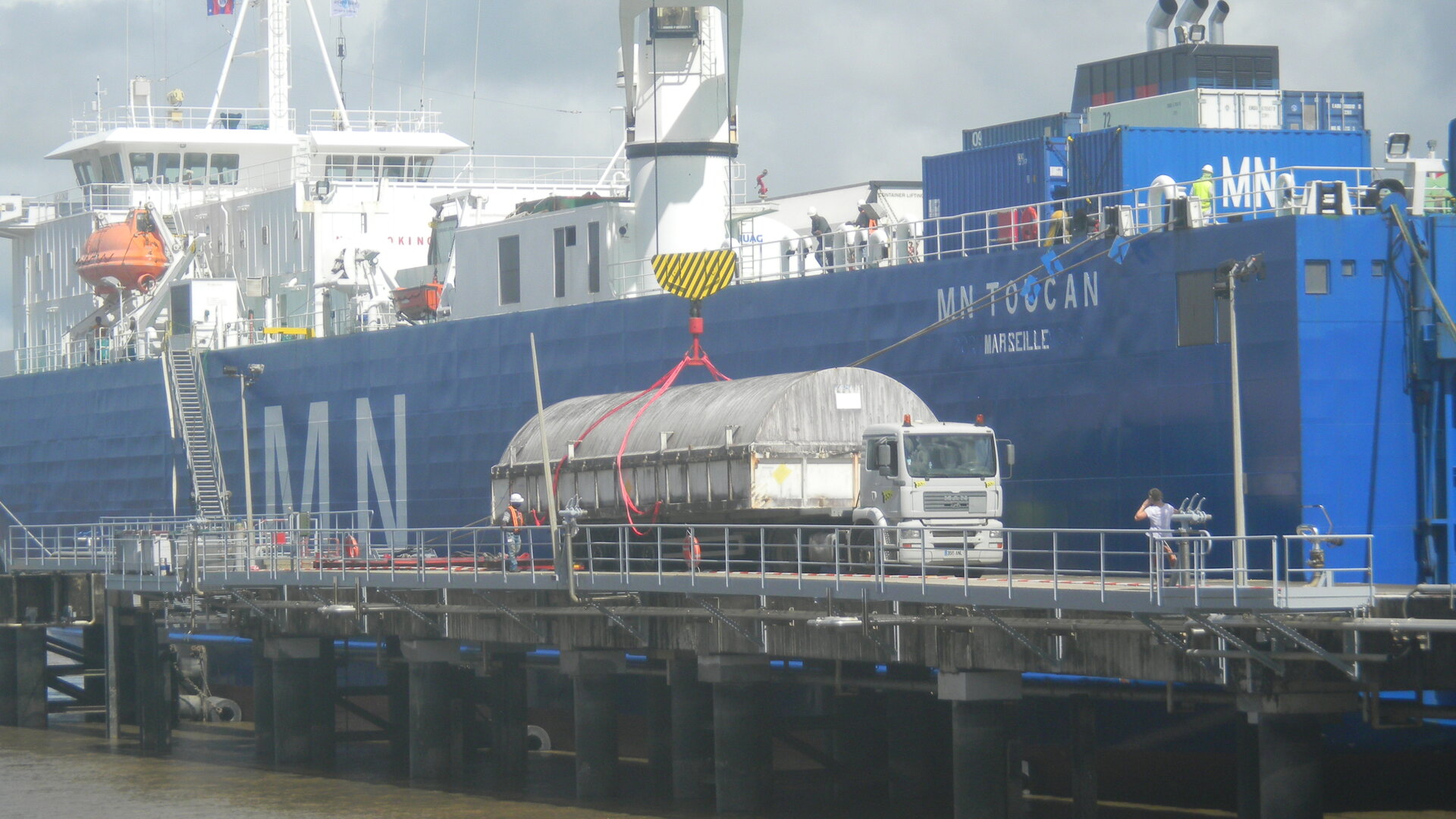I just don't see how the payload will be transport in a cost-efficient manner across the Pacific Ocean
If everything is set up well to handle it, it can be done. France/EU for example does so with Korou site in Guiana if you look at where the facilities are for production vs final assembly vs launch:
With 13 main sites located in Germany, mainland France and French Guiana, ArianeGroup is a fundamentally dual-purpose European industrial company active throughout the civil and defence space transportation chain.

www.ariane.group
Roll on, roll off ships used for this logistics across ocean:
Loading onto MN Toucan
www.esa.int
@Vergennes
Clearly the attractiveness of equator location made all this viable and sound (which I show in next part).
The issue lies elsewhere w.r.t SpaceX and Indonesia...there is lot to juggle here in the initial investment needed in setting up completely new facility as opposed to say starting another one up in Korou like EU did to buy + handle russian rockets for example (separately to Ariane).
Are you referring SeaLaunch the ship thingy or generic term of launching an orbital vehicle from the sea?
SeaLaunch (the ship) have inherited size limit due (not big enough ship for heavy payload). While launching super heavy payload from the sea (think of the old SeaDragon concept) also have operational practicality limit which is sea weather and location. The launching location is the critical point, because in general you want the launch site as close as possible to the equator to save propellant mass, along with area free of population eastward of the launch site
Yes SeaLaunch is example I quote that harnessed the advantage of equator launch (for geo sat birds) quite directly. But it fell apart over time because of reasons I bring up (keeping things integrated politically and well functioned long term) that would also have bearing on SpaceX approaching other countries now.
Geo stationary is a big market in satellites after all, and here is little diagram I just drew up in paint to explain the effect of launch location viability w.r.t inclination of the orbit you will achieve when you insert into LEO (to then take later to GEO). It has additional bits for any space-nerds/geeks to discuss further with me if they would like:
@Joe Shearer @Gautam @Paro @Sinan @T-123456 @xenon5434 @Test7 @Saiyan0321 @VCheng @UkroTurk @Zapper @Cabatli_53 @crixus @Raptor @Saithan @Webslave @500 @Milspec @Indos et al.
Actually there can be a bit of extra things done in steps 1 and 2, with making an elliptical LEO orbit so you can do inclination change cheaper (given low speed in apogee)...but this factors in for the larger envelope anyway....so really reducing that envelope cost (by getting as close to equator as possible for Geo stationary) is the biggest cost reduction driver for GEO-birds.
There is of course additional benefit of higher earth ground velocity found at equator too compared to higher latitude that helps, but it is generally secondary one up to about 30 degree inclination. This also ties into the eastern heading (to sea and no population zones for 1st stage debris especially) that is picked (given you make use of this eastern rotation of earth).
Molniya, tundra orbits etc are good alternatives for high latitudes looking to have as much look down time as possible (like geosynchronous is the gold standard for lower latitudes).
I don't see it happening myself. The supporting industry capability isn't there yet for any foreseeable future. And most importantly the education sector still legging too far behind to produce the necessary human resource. The work ethic also fare similar to the education sector.
Yes, nothing substitutes doing things the harder longer way. Shortcuts dont exist (sustainably) higher up tech chain you go especially.








